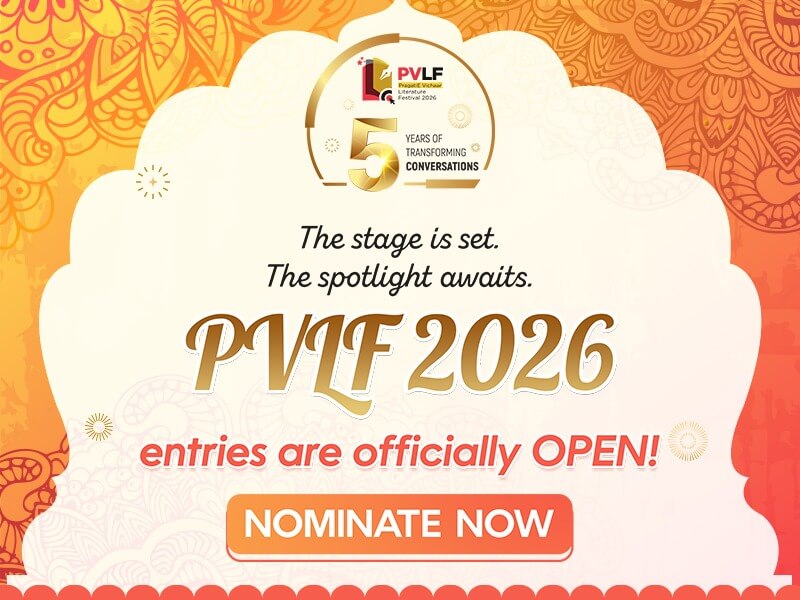Interview with Arjan Singh, Author “Competitive Success: Building Winning Strategies with Corporate War Games”
In an exclusive interview, Arjan Singh, author of “Competitive Success: Building Winning Strategies with Corporate War Games,” shares insights on strategic business planning.on Jun 24, 2024

Author ARJAN SINGH has advised 68 of Top 100 companies in the Fortune Global 500 list in building winning strategies and co-authored Best Practices in Managing Competitive Intelligence Research: For Pharmaceutical and Biotechnology Managers. With over twenty-six years of experience, Singh is an expert in helping companies develop data-driven strategies through war games, strategic and competitive analysis, scenario planning and building business early warning systems that deliver significant impact. He is an Adjunct Professor of Marketing and Global Consulting at Southern Methodist University (SMU) COX School of Business and lives in Scottsdale, Arizona with his wife and two children. Learn more about his work at www.CorporateWarGames.com
Frontlist: Your book, "Competitive Success: Building Winning Strategies with Corporate War Games," offers a unique approach to developing winning strategies through war games. Can you elaborate on the concept of war games and how they can help companies gain a competitive edge in dynamic markets?
Arjan: In "Competitive Success: Building Winning Strategies with Corporate War Games," the concept of war games is presented as a strategic tool to help companies navigate and succeed in dynamic markets.
War games are structured exercises that simulate competitive environments, allowing companies to anticipate and react to potential market scenarios.
Corporate war games are strategic simulations where teams within a company take on the roles of competitors, customers, and other market stakeholders. These simulations mimic real-world market dynamics and competitive interactions. The primary objective is to test strategies, explore possible outcomes, and identify potential risks and opportunities before they unfold in the actual market.
By simulating various scenarios, companies can identify potential risks and develop plans to mitigate them before they become real issues. Participants gain experience in making high-stakes decisions in a controlled environment, improving their decision-making skills for real-world situations. War games foster collaboration and communication among different departments, enhancing overall organizational cohesion and strategic alignment. The exercise helps companies gain deeper insights into market dynamics and competitor strategies, making them more adaptable to changes and better prepared to seize opportunities.
In dynamic markets, where change is constant and unpredictable, war games provide a proactive approach to strategy development. They are particularly valuable in industries like pharmaceuticals, technology, and finance, where rapid innovation and intense competition are the norms. By simulating competitive interactions and market shifts, companies can stay ahead of the curve, ensuring their strategies are robust and resilient.
Frontlist: With your extensive experience advising Fortune Global 500 companies on strategy development, what are some common challenges you've observed in the competitive landscape?
Arjan: Drawing from my extensive experience advising Fortune Global 500 companies, I've observed several common challenges that these organizations face in the competitive landscape. These challenges are often complex and multifaceted, but understanding and addressing them is crucial for maintaining a competitive edge.
Some of the key challenges are:
● Technological advancements occur at a breakneck pace, disrupting industries and redefining competitive advantages. Companies struggle to keep up with the latest technologies and integrate them into their operations. This lag can lead to obsolescence or loss of market share to more agile competitors.
● Operating in a global market means dealing with diverse regulatory environments, cultural differences, and economic conditions. Navigating these complexities can be costly and challenging, especially when trying to standardize products and services across different regions.
● The competitive landscape is increasingly crowded, with new entrants and innovative disruptors constantly emerging. Traditional competitive advantages can quickly erode, making it difficult for established companies to maintain their market position.
● As companies become more digital, they face heightened risks of cyber-attacks and data breaches. Cybersecurity incidents can lead to significant financial losses, operational disruptions, and loss of customer trust.
Frontlist: The book emphasizes the importance of incorporating uncertainty into strategic planning through early warning systems and scenario planning. How do these practices help companies anticipate and respond to unexpected events, such as the COVID-19 pandemic?
Arjan: Incorporating uncertainty into strategic planning through early warning systems and scenario planning is crucial for helping companies anticipate and respond to unexpected events, such as the COVID-19 pandemic. These practices enable organizations to be more agile, resilient, and better prepared for a wide range of potential disruptions.
Early Warning Systems -
Early warning systems are designed to detect signals or indicators of potential threats and opportunities well before they fully materialize. They provide advance notice of potential disruptions, enabling companies to take preemptive actions rather than reacting after the fact.
By identifying risks early, companies can develop and implement strategies to mitigate their impact, reducing the potential for severe consequences. These systems also help in spotting emerging opportunities, allowing companies to capitalize on new markets or trends ahead of competitors.
Scenario Planning -
Scenario planning involves creating and analyzing multiple plausible future scenarios based on various assumptions about key uncertainties. This process typically includes identifying key drivers, developing scenarios, and assessing impacts. Scenario planning helps companies prepare for a variety of potential futures, making them more adaptable and resilient to unexpected changes. By considering a range of possible outcomes, companies can make more informed strategic decisions that account for uncertainty. This approach promotes the development of flexible strategies that can be adjusted as new information becomes available, ensuring that companies can pivot quickly in response to changing circumstances.
Incorporating uncertainty into strategic planning through early warning systems and scenario planning is essential for building organizational resilience and agility. These practices enable companies to anticipate potential disruptions, respond proactively, and maintain a competitive edge even in the face of unexpected events like the COVID-19 pandemic.
Frontlist: The book emphasizes the importance of incorporating uncertainty into strategic planning through early warning systems and scenario planning. How do these practices help companies anticipate and respond to unexpected events, such as the COVID-19 pandemic?
Arjan: Incorporating uncertainty into strategic planning through early warning systems and scenario planning is crucial for helping companies anticipate and respond to unexpected events, such as the COVID-19 pandemic. These practices enable organizations to be more agile, resilient, and better prepared for a wide range of potential disruptions.
Early Warning Systems -
Early warning systems are designed to detect signals or indicators of potential threats and opportunities well before they fully materialize. They provide advance notice of potential disruptions, enabling companies to take preemptive actions rather than reacting after the fact.
By identifying risks early, companies can develop and implement strategies to mitigate their impact, reducing the potential for severe consequences. These systems also help in spotting emerging opportunities, allowing companies to capitalize on new markets or trends ahead of competitors.
Scenario Planning -
Scenario planning involves creating and analyzing multiple plausible future scenarios based on various assumptions about key uncertainties. This process typically includes identifying key drivers, developing scenarios, and assessing impacts. Scenario planning helps companies prepare for a variety of potential futures, making them more adaptable and resilient to unexpected changes. By considering a range of possible outcomes, companies can make more informed strategic decisions that account for uncertainty. This approach promotes the development of flexible strategies that can be adjusted as new information becomes available, ensuring that companies can pivot quickly in response to changing circumstances.
Incorporating uncertainty into strategic planning through early warning systems and scenario planning is essential for building organizational resilience and agility. These practices enable companies to anticipate potential disruptions, respond proactively, and maintain a competitive edge even in the face of unexpected events like the COVID-19 pandemi
Frontlist: The book emphasizes the importance of incorporating uncertainty into strategic planning through early warning systems and scenario planning. How do these practices help companies anticipate and respond to unexpected events, such as the COVID-19 pandemic?
Arjan: Incorporating uncertainty into strategic planning through early warning systems and scenario planning is crucial for helping companies anticipate and respond to unexpected events, such as the COVID-19 pandemic. These practices enable organizations to be more agile, resilient, and better prepared for a wide range of potential disruptions.
Early Warning Systems -
Early warning systems are designed to detect signals or indicators of potential threats and opportunities well before they fully materialize. They provide advance notice of potential disruptions, enabling companies to take preemptive actions rather than reacting after the fact.
By identifying risks early, companies can develop and implement strategies to mitigate their impact, reducing the potential for severe consequences. These systems also help in spotting emerging opportunities, allowing companies to capitalize on new markets or trends ahead of competitors.
Scenario Planning -
Scenario planning involves creating and analyzing multiple plausible future scenarios based on various assumptions about key uncertainties. This process typically includes identifying key drivers, developing scenarios, and assessing impacts. Scenario planning helps companies prepare for a variety of potential futures, making them more adaptable and resilient to unexpected changes. By considering a range of possible outcomes, companies can make more informed strategic decisions that account for uncertainty. This approach promotes the development of flexible strategies that can be adjusted as new information becomes available, ensuring that companies can pivot quickly in response to changing circumstances.
Incorporating uncertainty into strategic planning through early warning systems and scenario planning is essential for building organizational resilience and agility. These practices enable companies to anticipate potential disruptions, respond proactively, and maintain a competitive edge even in the face of unexpected events like the COVID-19 pandemi
Frontlist: The book emphasizes the importance of incorporating uncertainty into strategic planning through early warning systems and scenario planning. How do these practices help companies anticipate and respond to unexpected events, such as the COVID-19 pandemic?
Arjan: Incorporating uncertainty into strategic planning through early warning systems and scenario planning is crucial for helping companies anticipate and respond to unexpected events, such as the COVID-19 pandemic. These practices enable organizations to be more agile, resilient, and better prepared for a wide range of potential disruptions.
Early Warning Systems -
Early warning systems are designed to detect signals or indicators of potential threats and opportunities well before they fully materialize. They provide advance notice of potential disruptions, enabling companies to take preemptive actions rather than reacting after the fact.
By identifying risks early, companies can develop and implement strategies to mitigate their impact, reducing the potential for severe consequences. These systems also help in spotting emerging opportunities, allowing companies to capitalize on new markets or trends ahead of competitors.
Scenario Planning -
Scenario planning involves creating and analyzing multiple plausible future scenarios based on various assumptions about key uncertainties. This process typically includes identifying key drivers, developing scenarios, and assessing impacts. Scenario planning helps companies prepare for a variety of potential futures, making them more adaptable and resilient to unexpected changes. By considering a range of possible outcomes, companies can make more informed strategic decisions that account for uncertainty. This approach promotes the development of flexible strategies that can be adjusted as new information becomes available, ensuring that companies can pivot quickly in response to changing circumstances.
Incorporating uncertainty into strategic planning through early warning systems and scenario planning is essential for building organizational resilience and agility. These practices enable companies to anticipate potential disruptions, respond proactively, and maintain a competitive edge even in the face of unexpected events like the COVID-19 pandemic.
Frontlist: As a competitive intelligence expert, how do you stay updated on industry trends and market dynamics to ensure that your strategic recommendations remain relevant and impactful? Are there any resources or methodologies you rely on for continuous learning and development?
Arjan: As a competitive intelligence expert, staying updated on industry trends and market dynamics is crucial to ensuring that strategic recommendations remain relevant and impactful. Here are some key strategies, resources, and methodologies I rely on for continuous learning and development:
1. Regular Monitoring of Industry Publications and Reports:
● Subscribing to publications such as "Harvard Business Review," "The Economist,", "Wall Street Journal" and sector-specific journals.
● Utilizing reports from firms like Gartner, McKinsey, Forrester, and IDC to gain insights into market trends and forecasts.
● White Papers and Case Studies: Reading white papers and case studies from leading companies and research institutions.
2. Engagement with Professional Networks and Communities:
● Participating in organizations such as the Strategic and Competitive Intelligence Professionals (SCIP) and the Market Research Society (MRS).
● Attending industry conferences, webinars, and seminars to network with peers and learn about the latest developments.
● Engaging with online forums, LinkedIn groups, and other social media platforms where professionals discuss trends and share insights.
3. Leveraging Technology and Tools:
● Employing analytics tools such as Tableau, Power BI, and Google Analytics to interpret large datasets and uncover actionable insights.
● Integrating AI and machine learning tools to predict trends and automate data collection and analysis processes.
4. Scenario Planning and War Games:
● Regularly conducting scenario planning exercises to anticipate future market conditions and their potential impact on the business.
● Running war games to simulate competitive scenarios and test strategies in a controlled environment, enabling better preparedness for real-world challenges.
5. Customized Research and Consulting:
● Commissioning custom research from specialized firms to address specific strategic questions and challenges.
● Engaging with industry experts and consultants to gain deeper insights and validate assumptions.
Frontlist: In today's globalized economy, companies often operate in diverse cultural and regulatory environments. How do you advise companies to navigate these complexities and adapt their strategies to different cultural contexts while maintaining a cohesive overall vision?
Arjan: Navigating the complexities of diverse cultural and regulatory environments in a globalized economy requires a nuanced approach that balances local adaptation with a cohesive overall vision. Here are several key strategies I advise companies to implement:
Understand Local Cultures and Markets:
Conducting thorough market research helps to understand local consumer behavior, preferences, and cultural nuances. This can involve surveys, focus groups, and ethnographic studies. Cultural sensitivity training can be provided for employees, especially those in managerial and customer-facing roles, to foster respect and understanding of local customs and practices. Collaborating with local businesses, consultants, and cultural experts who can help offer valuable insights and facilitate smoother market entry and operations.
Adapt Products and Services:
Adapting products and services to meet local tastes and preferences can involve modifying product features, packaging, branding, and marketing messages. Local teams should be encouraged to innovate and develop products designed for their markets. This not only meets local needs but also drives engagement and market relevance.
Cross-Cultural Communication and Collaboration:
Building diverse teams with members from different cultural backgrounds helps to foster cross-cultural understanding and innovation. Clear and effective communication establishes channels that accommodate time zone differences and language barriers.
Feedback and Continuous Improvement:
Establishing feedback loops to gather insights from local customers, employees, and partners helps to refine strategies and improve market responsiveness. A culture of continuous learning and adaptation must be promoted. Teams must be encouraged to stay informed about global trends and local developments and be flexible in their approach.
Successfully navigating the complexities of diverse cultural and regulatory environments requires a strategic balance between global coherence and local adaptation. By understanding local markets, adapting products and services, ensuring regulatory compliance, maintaining a cohesive corporate vision, fostering cross-cultural communication, and continuously learning and improving, companies can thrive in the global marketplace.
Frontlist: In today's globalized economy, companies often operate in diverse cultural and regulatory environments. How do you advise companies to navigate these complexities and adapt their strategies to different cultural contexts while maintaining a cohesive overall vision?
Arjan: Navigating the complexities of diverse cultural and regulatory environments in a globalized economy requires a nuanced approach that balances local adaptation with a cohesive overall vision. Here are several key strategies I advise companies to implement:
Understand Local Cultures and Markets:
Conducting thorough market research helps to understand local consumer behavior, preferences, and cultural nuances. This can involve surveys, focus groups, and ethnographic studies. Cultural sensitivity training can be provided for employees, especially those in managerial and customer-facing roles, to foster respect and understanding of local customs and practices. Collaborating with local businesses, consultants, and cultural experts who can help offer valuable insights and facilitate smoother market entry and operations.
Adapt Products and Services:
Adapting products and services to meet local tastes and preferences can involve modifying product features, packaging, branding, and marketing messages. Local teams should be encouraged to innovate and develop products designed for their markets. This not only meets local needs but also drives engagement and market relevance.
Cross-Cultural Communication and Collaboration:
Building diverse teams with members from different cultural backgrounds helps to foster cross-cultural understanding and innovation. Clear and effective communication establishes channels that accommodate time zone differences and language barriers.
Feedback and Continuous Improvement:
Establishing feedback loops to gather insights from local customers, employees, and partners helps to refine strategies and improve market responsiveness. A culture of continuous learning and adaptation must be promoted. Teams must be encouraged to stay informed about global trends and local developments and be flexible in their approach.
Successfully navigating the complexities of diverse cultural and regulatory environments requires a strategic balance between global coherence and local adaptation. By understanding local markets, adapting products and services, ensuring regulatory compliance, maintaining a cohesive corporate vision, fostering cross-cultural communication, and continuously learning and improving, companies can thrive in the global marketplace.



.jpg)






.jpg)

.jpg)
.jpg)
.jpg)
.jpg)
.jpg)
.jpg)

.jpg)










Sorry! No comment found for this post.